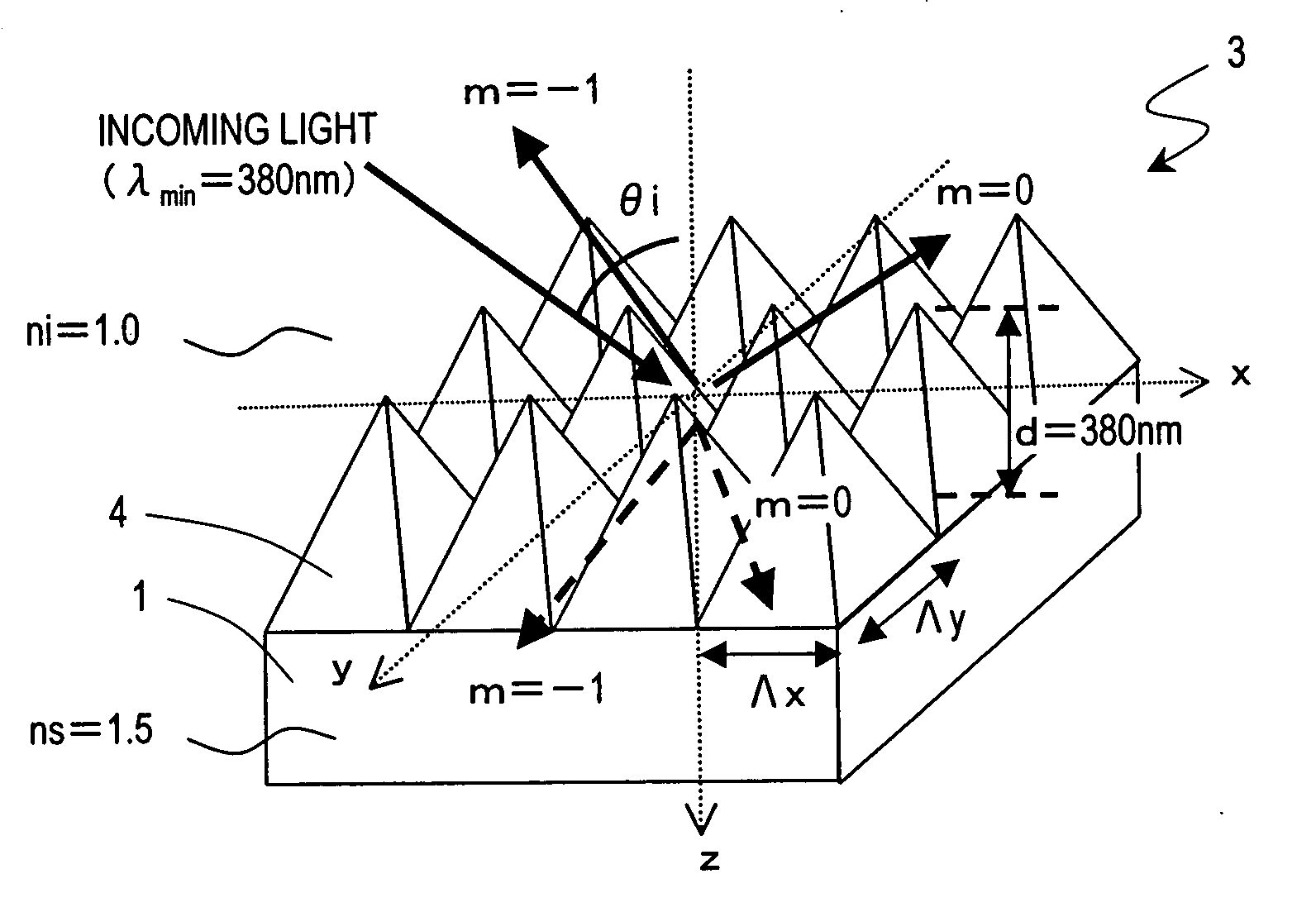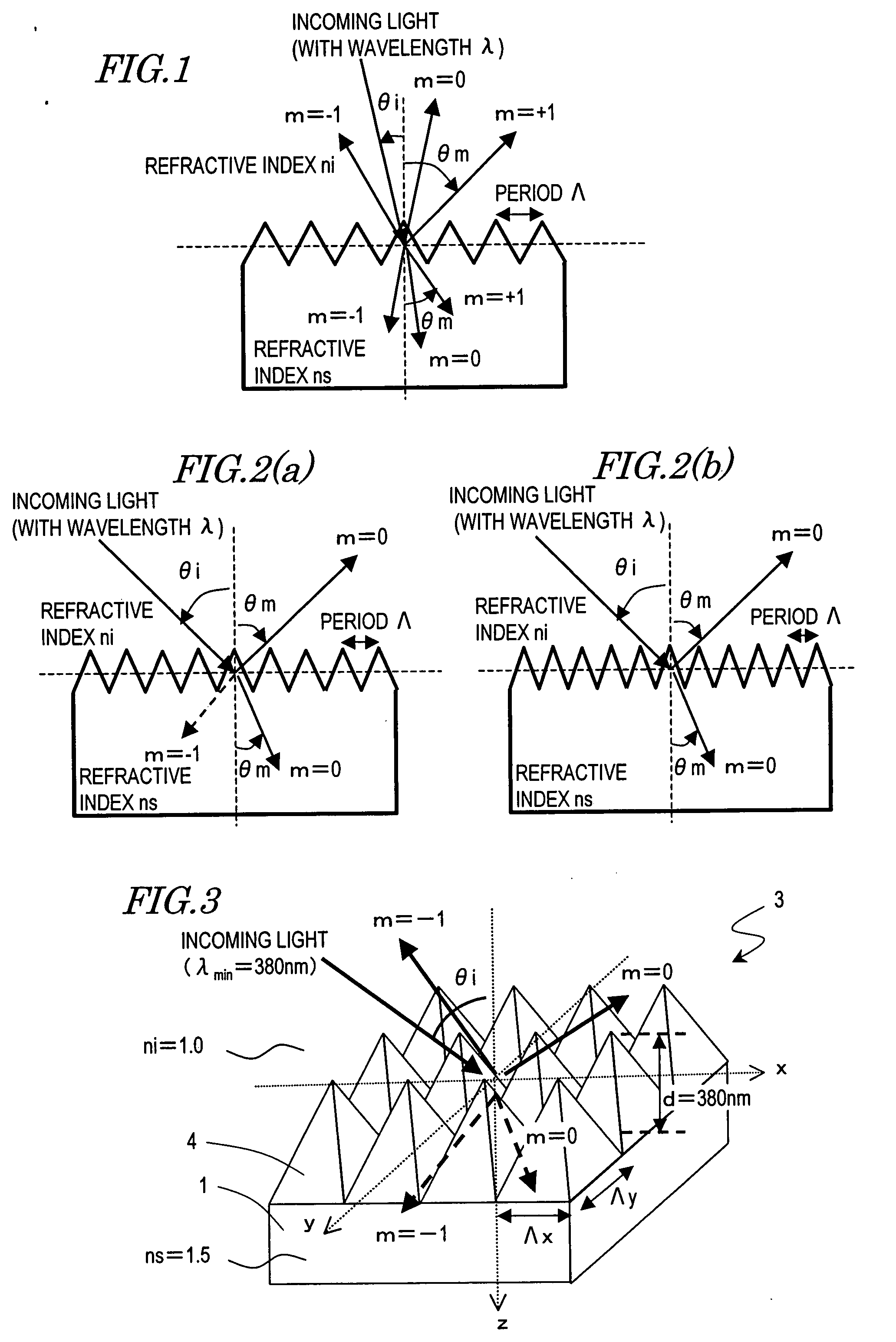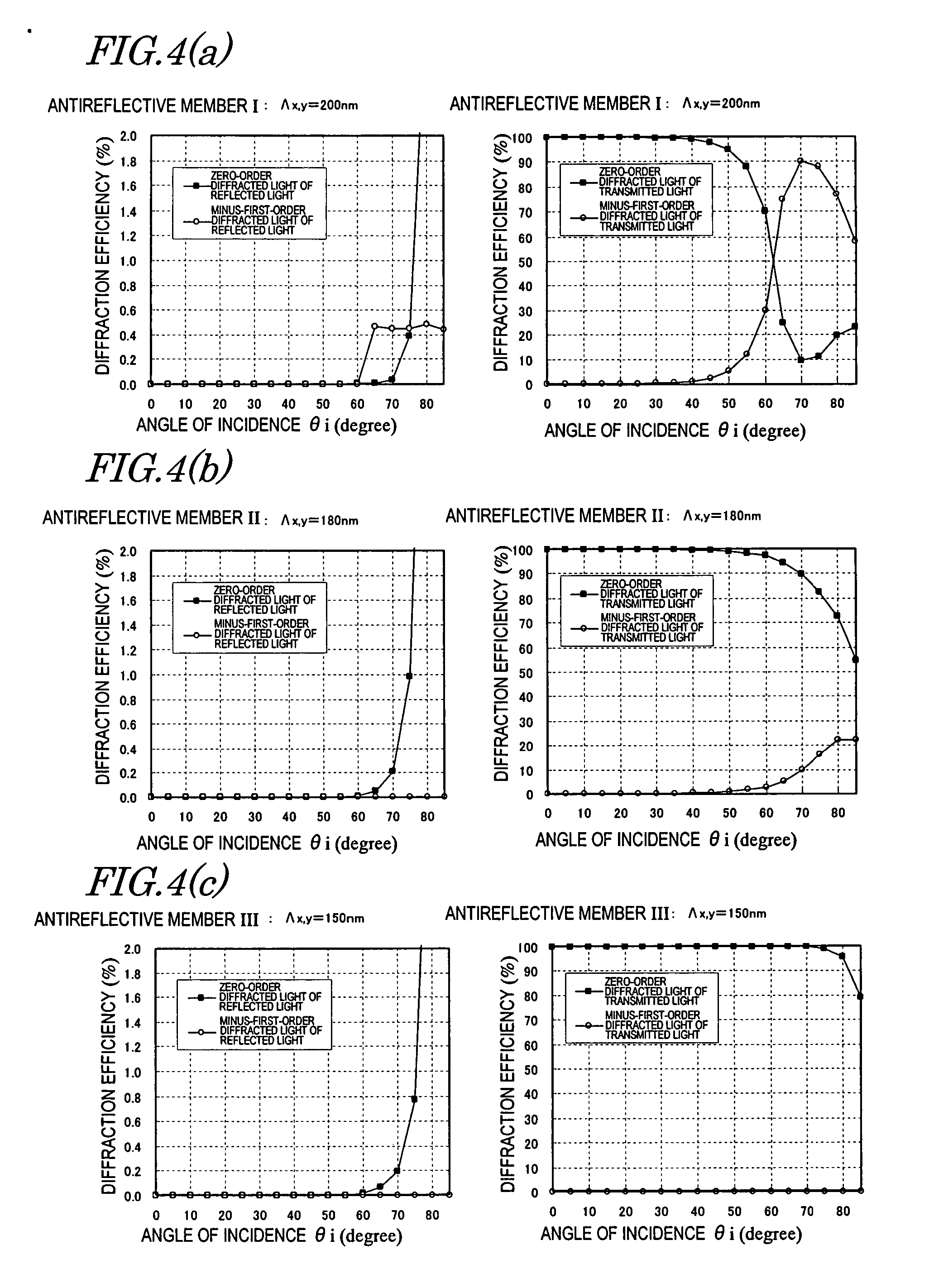Antireflective member, optical element, display device, method of making stamper and method of making antireflective member using the stamper
a technology of anti-reflection and stamping, which is applied in the direction of instruments, optical elements, diffusing elements, etc., can solve the problems of affecting visibility, a lot of time and cost, and a decrease in the percent of light transmitted, so as to reduce the regular reflection, improve the anti-reflection function, and reduce the effect of cos
- Summary
- Abstract
- Description
- Claims
- Application Information
AI Technical Summary
Benefits of technology
Problems solved by technology
Method used
Image
Examples
embodiment 1
[0120] Hereinafter, a first specific preferred embodiment of an antireflective member according to the present invention will be described with reference to the accompanying drawings. The antireflective member of this preferred embodiment has an uneven surface pattern, in which unit structures are arranged at respective periods that are both shorter than the wavelength of an incoming light ray, on the surface of a substrate. The member satisfies the following Inequality (1): Λ x,yλmin<1ni+ni·sin θ imax(1)
where λmin is the shortest wavelength of the incoming light ray, θimax is the largest angle of incidence of the incoming light ray, ni is the refractive index of an incidence medium, ns is the refractive index of the antireflective member, Λx is the period of the uneven surface pattern in the x direction and Λy is the period of the uneven surface pattern in the y direction. In the following description, Λx and Λy will be collectively represented as “Λx, Λy”.
[0121] The an...
embodiment 2
[0145] Hereinafter, a second specific preferred embodiment of an antireflective member according to the present invention will be described. The antireflective member of this preferred embodiment is a variation of the antireflective member of the first preferred embodiment that satisfies Equation (1) (more preferably Equation (2)). And if an axis of coordinates defined in the height direction of the uneven surface pattern is h-axis; the highest-level point of raised portions of the uneven surface pattern is defined by h=d; and the lowest-level point of recessed portions of the uneven surface pattern is defined by h=0, then an effective refractive index neff(h), represented as a function of h, further satisfies the following Equations (3):
neff(h=0)≈ns and neff(h=d)≈ni (3)
The antireflective member of this preferred embodiment can reduce the production of regular reflection (i.e., zero-order reflected diffracted light) sufficiently.
[0146] The effective refractive index is determin...
embodiment 3
[0157] Hereinafter, a third specific preferred embodiment of an antireflective member according to the present invention will be described. The antireflective member of this preferred embodiment is a variation of the antireflective member of the second preferred embodiment that satisfies Equation (3). And the effective refractive index neff(h) has at least one intersection with a function Neff(h) given by the following Equation (5):
Neff(h)={(neff(h=0)−neff(h=d)) / d}×h+neff(h=0) (5)
and further satisfies the following Inequality (6):
|Neff(h)−neff(h)|≦|neff(h=d)−neff(h=0)|×0.2 (6)
According to this preferred embodiment, even if the standardized height given by d / λ is even lower than the antireflective member of the second preferred embodiment described above, the regular reflectance can still be reduced to 0.1% or less.
[0158] This preferred embodiment requires that the effective refractive index neff(h) of the uneven surface shape, represented as a function of the height h of un...
PUM
| Property | Measurement | Unit |
|---|---|---|
| size | aaaaa | aaaaa |
| angle of incidence | aaaaa | aaaaa |
| refractive index | aaaaa | aaaaa |
Abstract
Description
Claims
Application Information
 Login to View More
Login to View More - R&D
- Intellectual Property
- Life Sciences
- Materials
- Tech Scout
- Unparalleled Data Quality
- Higher Quality Content
- 60% Fewer Hallucinations
Browse by: Latest US Patents, China's latest patents, Technical Efficacy Thesaurus, Application Domain, Technology Topic, Popular Technical Reports.
© 2025 PatSnap. All rights reserved.Legal|Privacy policy|Modern Slavery Act Transparency Statement|Sitemap|About US| Contact US: help@patsnap.com



